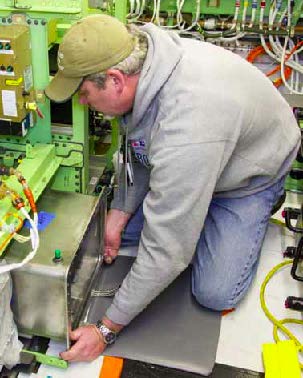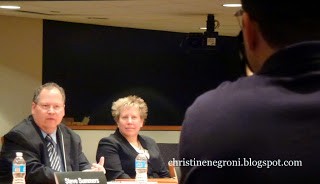@Tesla This is what happened to my husband and his car today. No accident,out of the blue, in traffic on Santa Monica Blvd. Thank you to the kind couple who flagged him down and told him to pull over. And thank god my three little girls weren’t in the car with him pic.twitter.com/O4tPs5ftVo
— Mary McCormack (@marycmccormack) June 16, 2018
A dramatic video of a Tesla Model S furiously burning by side of a road in Southern California, is yet another reason why U.S. government investigators are right to examine the effect of new technology on overall transportation safety.
On Saturday, actress Mary McCormack, tweeted a video of her husband’s Tesla after it burst into flames. The roaring fire which appears to be coming from packs of lithium ion battery cells below the front section of the car of television producer Michael Morris, is the third alarming event this Spring, though in this case no one died.
The same cannot be said for a wicked blaze that trapped two high school seniors in a Tesla S in Ft. Lauderdale in May or the crash of a Tesla Model X in Mountain View, California in March. Both fatal accidents are under investigation by the NTSB. While the safety board does not ordinarily veer into auto accidents, the cars share technologies used in public transportation making these events not only news-making and tragic for the victims but issues of public concern.
In the well-publicized accidents that have occurred in the hundreds of millions of miles driven, both the auto pilot functions and the volatility of the lithium ion batteries have proven problematic.
- Tesla cars are powered by more than 7 thousand small lithium ion cells laid in a bed that runs the length of the underside of the car. What are the hazards for occupants of the cars, those nearby and the first responders when these batteries go awry?
- Tesla is an early adopter of advanced, auto-driver technology in the form of lane-keeping, distance following and reactive cruise control. Does using auto-pilot subject drivers to the same risks of complacency, confusion and distraction that pilots experience in overly automated cockpits?
Earlier this month, the NTSB gave a preliminary look at the facts of the fatal Mountain View case. Thirty-seven-year old Walter Huang, was at the wheel of his autopilot-equipped Tesla SUV, when it unexpectedly left the lane and drove into a highway exit ramp impacting a damaged crash barrier at 71 miles per hour. The car was then hit by two cars traveling on the exit ramp. A fire ensued.

In the Ft. Lauderdale accident, in which three young men were trapped inside the car by a fiery crash, the NTSB sent four investigators who will look into survivability factors as well as the performance and safety of fire fighters and other first responders who facing extraordinary challenges with lithium ion battery fires. The fires cannot be extinguished and the smoke and fumes are toxic. In the Mountain View, California accident, the car’s cells continued to flame up and ignite adjacent cells for days afterward.
That these matters are undergoing federal scrutiny should come as no surprise to those in the aviation industry – especially when fatalities are involved and dramatic footage like the one tweeted by McCormack goes viral. But Tesla chief Elon Musk seems resistant to the NTSB’s involvement.
Tossed from participating as a party in the Mountain View crash for defying an NTSB policy prohibiting them from making statements about the facts of the case, Musk accused the NTSB of inappropriate meddling.
“The regulatory body for the automotive industry in the U.S. is the National Highway Traffic Safety Administration (NHTSA) with whom we have a strong and positive relationship,” the company said in a statement in April.
In an exchange with Dan Noyes of ABC7 News in San Francisco, Tesla said the driver bore responsibility for the accident.
“Autopilot requires the driver to be alert and have hands on the wheel… the crash happened on a clear day with several hundred feet of visibility ahead, which means that the only way for this accident to have occurred is if Mr. Huang was not paying attention to the road.”
That message is unlikely to be embraced by the safety board’s chairman, Robert Sumwalt who, while still an airline pilot and years before joining the board had already published research on how automation in the cockpit could erode performance and encourage complacency.
The overriding philosophy of accident investigations is that identifying failures isn’t the end goal, its the first step towards understanding what needs to be fixed. Musk ought to appreciate that considering how willing he was to advise Boeing when the airplane manufacturer was struggling with its own unhappy experience with lithium ion batteries five years ago.
In 2013, after two batteries experienced thermal runaway on Japanese airlines, the entire fleet of 787 Dreamliners were grounded. The NTSB and its Japanese equivalent the JTSB launched probes that took a year and a half to complete. But a few weeks in, Elon Musk was already offering advice on the battery design to Boeing.
 Not long after the 787 was flying again with its batteries housed in steel and titanium containers, and at the request of the same safety board with which he is now feuding, Tesla sent engineer Celina Mikokajczak to testify at a two-day forum in D.C. to explain how his company was safely using lithium ion batteries to power its cars.
Not long after the 787 was flying again with its batteries housed in steel and titanium containers, and at the request of the same safety board with which he is now feuding, Tesla sent engineer Celina Mikokajczak to testify at a two-day forum in D.C. to explain how his company was safely using lithium ion batteries to power its cars.
Five months later Tesla electric cars started igniting (In the you-can’t-make-this-up department, the first person on the scene when Rob Carlson’s Tesla S erupted into flames in Kent, Washington in 2013, was Steve Emmert, a director at Boeing Commercial Airplanes responsible for environmental strategy.) Its almost as eerie that this latest Tesla drama occurred to a television producer and was launched into the Twittersphere by a Hollywood actress.
Coincidences notwithstanding, Tesla must know that as a pioneer in not one but several aspects of 21st Century transportation, its foibles will make news. Standing in the way of investigations designed to identify the many factors that contribute to accidents isn’t in anyone’s best interest. How much better if Elon Musk and the company he heads would accept, as aviation does, that mistakes have as much to teach about safety as success.

Author of The New York Times bestseller, The Crash Detectives, I am also a journalist, public speaker and broadcaster specializing in aviation and travel.










Well said!
The difference in scrutiny amongst the various classes of vehicles engaged in terminal failures has traditionally been determined by the number of persons at risk in the event. More dead bodies = more serious scrutiny (except for railroads, but that’s another chapter). The failure characteristics of banks of Li-ion batteries has overtaken that tradition, but the traditional investigating authorities have yet to catch up.
The public would be better served by their cooperating rather than quibbling over whose authority is paramount.